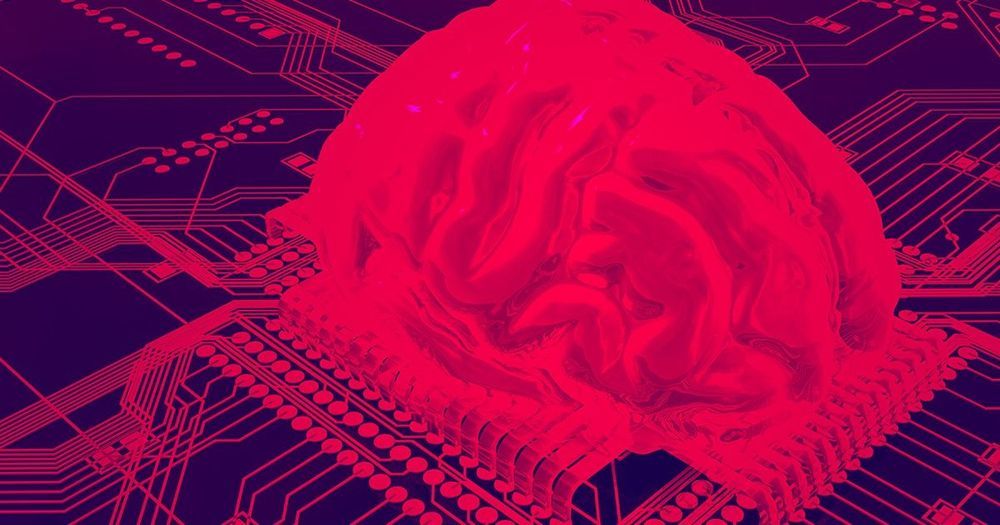The philosophy that we should merge with machines to expand our intelligence and extend life is gaining traction. Design, scientific and technological frontiers are being pushed to redefine nature through AI, AR, biotech, genetics, and VR.



AMOLF researchers and their collaborators from the Advanced Science Research Center (ASRC/CUNY) in New York have created a nanostructured surface capable of performing on-the-fly mathematical operations on an input image. This discovery could boost the speed of existing imaging processing techniques and lower energy usage. The work enables ultrafast object detection and augmented reality applications. The researchers publish their results today in the journal Nano Letters.
Image processing is at the core of several rapidly growing technologies, such as augmented reality, autonomous driving and more general object recognition. But how does a computer find and recognize an object? The initial step is to understand where its boundaries are, hence edge detection in an image becomes the starting point for image recognition. Edge detection is typically performed digitally using integrated electronic circuits implying fundamental speed limitations and high energy consumption, or in an analog fashion which requires bulky optics.
Learn more about nuclear weapons and what you can do to stop them.
EN: http://www.notonukes.org
FR: http://www.sansarmesnucleaires.org
ES: http://www.nomasarmasnucleares.org
PT: http://www.fimdasarmasnucleares.org
DE: http://www.neinzuatomwaffen.org
AR: http://www.notonukes.org/ar
RU: http://www.notonukes.org/ru
CH: http://www.notonukes.org/zh
Spread the word and use the following Hashtags:
EN: #nuclearban FR: #nuclearban
ES: #nomasarmasnucleares
PT: #fimdasarmasnucleares
Sources:
https://sites.google.com/view/nuclearweapons/
As you may have noticed, we like to blow stuff up on this channel. So when the International Red Cross approached us to collaborate on a video about nuclear weapons, we were more than excited.
Until we did the research. It turned out we were a bit oblivious off the real impact of nuclear weapons in the real world, on a real city. And especially, how helpless even the most developed nations on earth would be if an attack occurred today.
So hopefully this video demonstrates how extremely non fun a real world nuclear attack would be, without being too gruesome. This collaboration was a blast (no pun intended) and we want to say a huge thank you to the International Red Cross!
Support us on Patreon so we can make more videos (and get cool stuff in return): https://www.patreon.com/Kurzgesagt?ty=h



By this time, we can all conclude that Facebook is really ambitious when it comes to the production of high-end gadgets. This when you consider the Oculus line of devices, a VR wristband and RayBan AR glasses. And if that wasn’t enough, a new device is up for development.
The company has now revealed plans to build a mind-reading wristband letting people control devices without touching them. This is after the company finally acquired CTRL-Labs, a startup that is currently venturing into brain-computer interfaces. The deal has been reported to value at $1 billion.
The deal was then announced by Andrew Bosworth, Vice President of AR and VR at Facebook. “We spend a lot of time trying to get our technology to do what we want rather than enjoying the people around us,” he said.
What if you could see sounds? Apple’s AR Kit visualizes them in space: http://trib.al/sNus2a5
Cambridge engineers have developed a new augmented reality (AR) head mounted display (HMD) that delivers a realistic 3D viewing experience, without the commonly associated side effects of nausea or eyestrain.
The device has an enlarged eye-box that is scalable and an increased field of view of 36º that is designed for a comfortable viewing experience. It displays images on the retina using pixel beam scanning which ensures the image stays in focus regardless of the distance that the user is fixating on. Details are reported in the journal Research.
Developed by researchers at the Centre for Advanced Photonics and Electronics (CAPE) in collaboration with Huawei European Research Centre, in Munich, the HMD uses partially reflective beam splitters to form an additional “exit pupil” (a virtual opening through which light travels). This, together with narrow pixel beams that travel parallel to each other, and which do not disperse in other directions, produces a high quality image that remains unaffected by changes in eye focus.